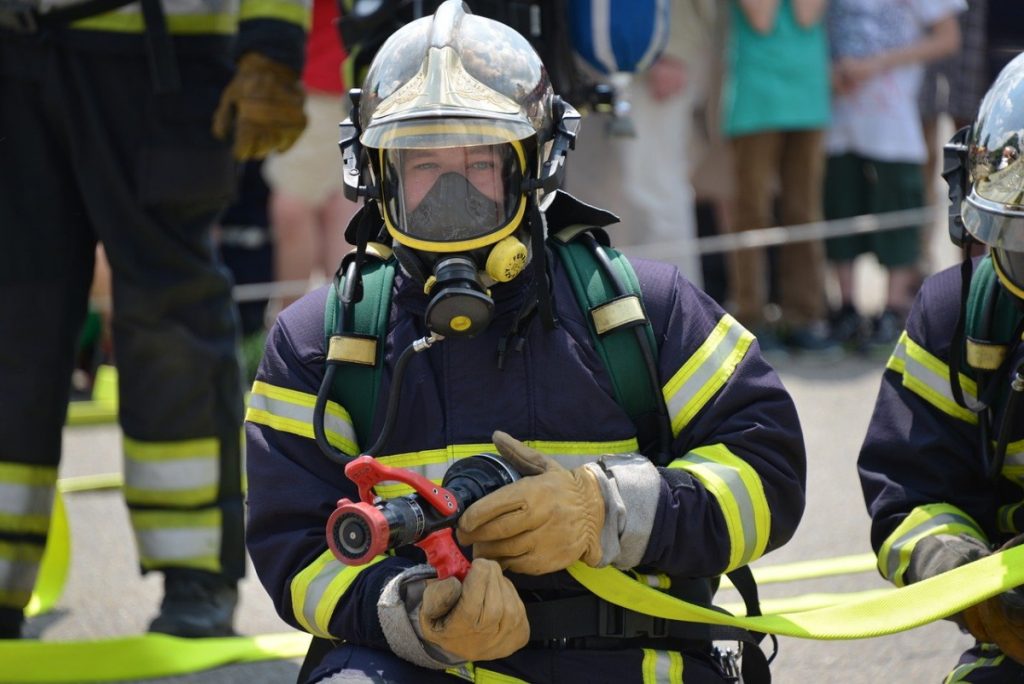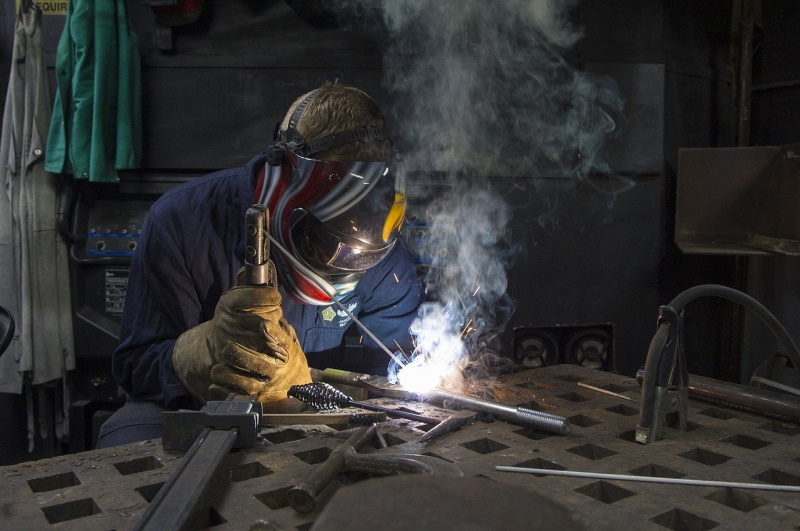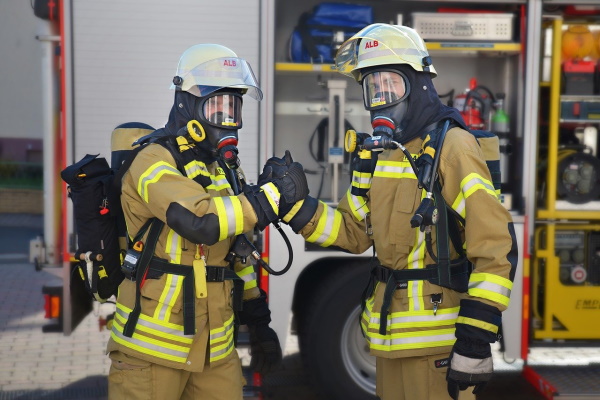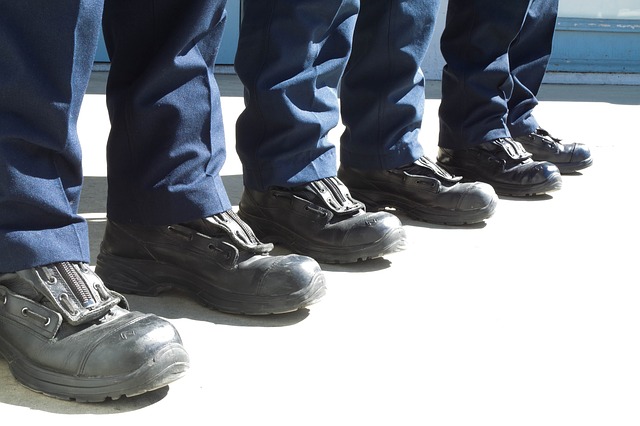Construction workers, factory workers and everyone else who works in an environment that has risks and hazards should always wear personal protective equipment, whenever they are working. People who work in such environments are usually exposed to mechanical, chemical, electrical, physical, and radiological hazards, among others. And such hazards may lead to injuries and illnesses, both short term and long term. Personal protective equipment is divided into various categories such as:
Eye and Face Protection
If you work in a hazardous area where you are exposed to flying objects like metal pieces, fragments, and sparks, then you should always protect your eyes and face. Working without proper protection can lead to serious injuries like permanent loss of eyesight, contusions, abrasions, and punctures, just to name a few. For eye and face protection, the personal protective equipment that you should wear include safety spectacles, safety goggles, and face shields.
Safety Spectacles
Safety spectacles are designed to protect your eyes and face from impact hazards like flying objects, fragments, large chips, as well as particles. Your safety spectacles should be equipped with side shields, to ensure that the entire face and eye area is adequately protected against flying objects. Safety spectacles without side shields should not be used in workplaces that have flying objects since they will not provide the required level of eye protection. Frames for safety spectacles can be made of plastic or metal, while the lenses should be impact resistant. Side shields can be inbuilt or detachable. You should pay attention to all the main parts of the safety spectacles before buying them, to make sure they can provide the required level of protection.
Safety Goggles
Just like safety spectacles, safety goggles are designed to shield the worker’s eyes against impact hazards like flying objects, fragments, particles, and large chips. However, safety goggles are slightly larger than safety spectacles. When worn, they cover the entire area around the eyes, thus forming a protective barrier against flying objects, whether the objects are coming from above or below the eyes. Some safety goggles are equipped with prescription lenses, which are usually fitted behind the protective lenses, for workers who may need vision correction. When selecting safety goggles, you should consider the frame, specific lens, as well as ventilation options.
Face Shields
Face shields are designed to protect the whole face against a wide range of hazards such as flying objects, fragments, particles, and large chips. Their windows feature different levels of thickness and materials. The thickness level of the window should align with the specific task they will be used for. It’s important to note that face shields, when worn alone, will not provide adequate protection against impact hazards. Therefore, workers should use them together with safety goggles, or safety spectacles.
Hand Protection
Almost all manual jobs require the use of hands. Therefore, the hands will be exposed to a wide range of hazards such as abrasions, burns, infections, cuts, heat, cold, chemical contamination and vibration, just to name a few. Every person who works in an area that has such hazards should, therefore, wear appropriate hand and arm protection gear. Some of the equipment used for hand protection include chemical resistant gloves of varying degrees, nitrile gloves, wire mesh gloves, and insulated gloves. Wire mesh gloves are used in work environments that involve handling live animals or where the worker may be exposed to cuts. Insulated gloves, on the other hand, are used to handle cryogenic liquids while chemical resistant gloves are used in workplaces that involve organic solvents, dangerous solvents, hazardous liquids, water-reactive chemicals and biological hazards such as body tissues, human blood, and body fluids. Gloves should never be worn in situations where they can be caught in machines.
Hearing Protection
Continuous exposure to high noise levels can lead to permanent damage to your hearing. While the hearing damage gets worse gradually with every repeat exposure, some extremely high noise levels or sounds can lead to instant damage such as an explosion or gunfire. And that’s why it’s important for workers who operate in areas that have high noise levels should wear appropriate hearing protection equipment. Earmuffs and earplugs are the main types of hearing protectors used in most workplaces.
Earmuffs are usually worn over the head or behind the neck, with a supportive headband. They are equipped with hard plastic cups, featuring a sound-absorbing lining and a cushioned seal. Earmuffs should be quick and easy to put on. Also, the tensioned band should be worn properly to ensure the cups are well positioned around the ears. If the headband is not properly adjusted, the cups may not keep out all the noise and sounds. You will also come across some earmuffs that have been directly mounted on helmets. This combination will provide a better performance and a better fit, compared to wearing them separately. The only problem with earmuff and helmet combinations is that they can only fit a few head sizes.
Earplugs, unlike earmuffs, are usually worn in the ear – either over the entrance of the ear canal or directly in the ear canal. They provide hearing protection by sealing the canal. Earplugs should be kept clean at all times. Also, you should only insert them with clean hands, to prevent bacterial and fungal infection to your ears. While you can clean earplugs with water and soap, wearing them when they are wet is not recommended, since they will not provide the required level of protection.
Whether you choose earplugs or earmuffs, the equipment you choose should provide adequate hearing protection. In fact, it must prevent exposure to noise and sound above the limit value while reducing noise exposure to levels below the upper action value. Also, the equipment you choose for hearing protection should be compatible with other protective and safety gear. Employees should provide workers with a wide range of hearing equipment or sound protectors so that they can choose the ones that suit them best.
Respiratory Protection
People, who work in dust-filled shops, confined spaces and other areas that could pose breathing problems, are usually exposed to a wide range of respiratory hazards. As much as keeping out various contaminants like harmful gases, mists, smokes, fogs, and sprays is usually the first line of defense against these hazards, it’s not always possible to eliminate them completely. And that’s why proper respiratory protection is vital.
The respiratory system presents the most direct and fastest mode of entry to the body. And that’s why the Occupational Safety and Health Administration (OSHA), requires all employers to follow certain guidelines when it comes to respiratory protection safety compliance. For instance, all employers must first conduct a comprehensive assessment of the workplace to determine the type of respiratory hazards present. Respiratory hazards fall under 3 distinct categories – particulate contaminants, gas and vapor contaminants, and oxygen-deficient air. Once the employer has identified the respiratory hazards present at their workplace, they can then proceed to purchase the required protective gear.
Respiratory protective gear varies in application, design as well as protective capability. The device used should provide adequate protection against the respiratory hazards present in a particular workplace. There are two types of respirators used to protect workers against respiratory hazards. These are air-purifying and air-supplied devices. Air-purifying respirators are designed to be used against gases, vapors, and particulates. On the other hand, air-supplied devices use a primary source of air to provide a steady flow of fresh, unpolluted air to the worker’s facepiece. Respirators used at work should always comply with OSHA’s regulations and other safety guidelines.
Head Protection
Employees who work in construction sites, shipyards and other areas that have falling objects should always wear head protective equipment such as hard hats and bump caps. Hard hats help to protect workers against penetration, impact and electrical shock hazards, as well as burns. Protective hard hats must adhere to the specific guidelines. Hard hats fall under 2 main types – type I and type II. Type 1 hard hats are designed to protect the head against objects falling from above such as a nail gun or a hammer. Type 2 hard hats, on the other hand, are designed to protect the worker’s head against lateral impact. Hard hats are further divided into 3 industrial classes – class G, class E and class C. Class G hard hats provide protection from low-voltage electrical conductors while class E hard hats provide protection against high-voltage conductors. Class C hard hats don’t provide any electrical protection.
Foot and Leg Protection
Workplace foot hazards come in various forms. For instance, you might come across poisonous or corrosive materials, piercing objects, rolling machinery as well as falling objects. Therefore, all workers should wear the right safety boots, to protect their feet against these hazards. Foot and leg personal protective equipment, should be chosen depending on the hazards present at the job site or workplace. For instance, if work in a job site that has falling objects, then you should wear steel toe work boots. On the other hand, if you work in a place that has electrical hazards, then your work boots should be made of non-conductive materials, to prevent the risk of electrical shock.
People who work in extremely cold job sites should use insulated work boots while those that work in job sites that have sharp objects should always wear puncture-resistant boots. Puncture-resistant boots are equipped with composite or steel plates, fitted within the midsole. Even if the worker steps on a nail or any other sharp object, it will not injure the foot. When buying safety work boots, make sure they provide proper ankle and arch support. They should also fit well and keep your feet comfortable throughout the day.
Body Protection
Employees who work outdoors must wear the appropriate body personal protective equipment. Body PPE is intended to protect workers against extreme weather conditions while making sure they are highly visible when they are working. Some common types of body protection gear include life jackets, harnesses, high visibility clothing, as well as clothing designed for specific weather conditions.
Closing Remarks
Workplaces and job sites are full of various dangers and hazards. Putting in place measures and strategies that can reduce or prevent these hazards will go a long way in providing a healthy work environment for workers. By using the right personal protective equipment and adopting the right practices, workers will get the job done in a safe and effective manner.






0 comments